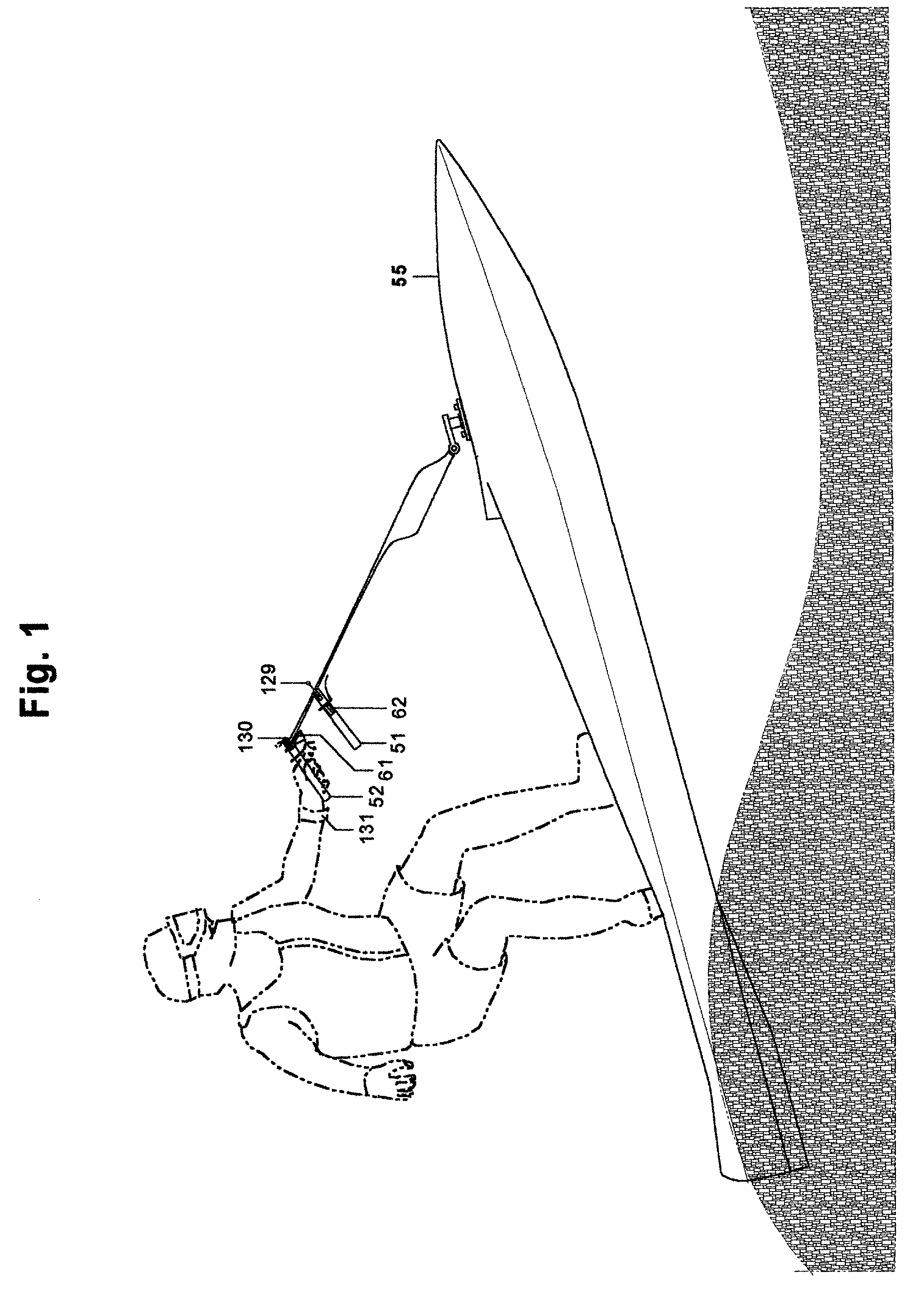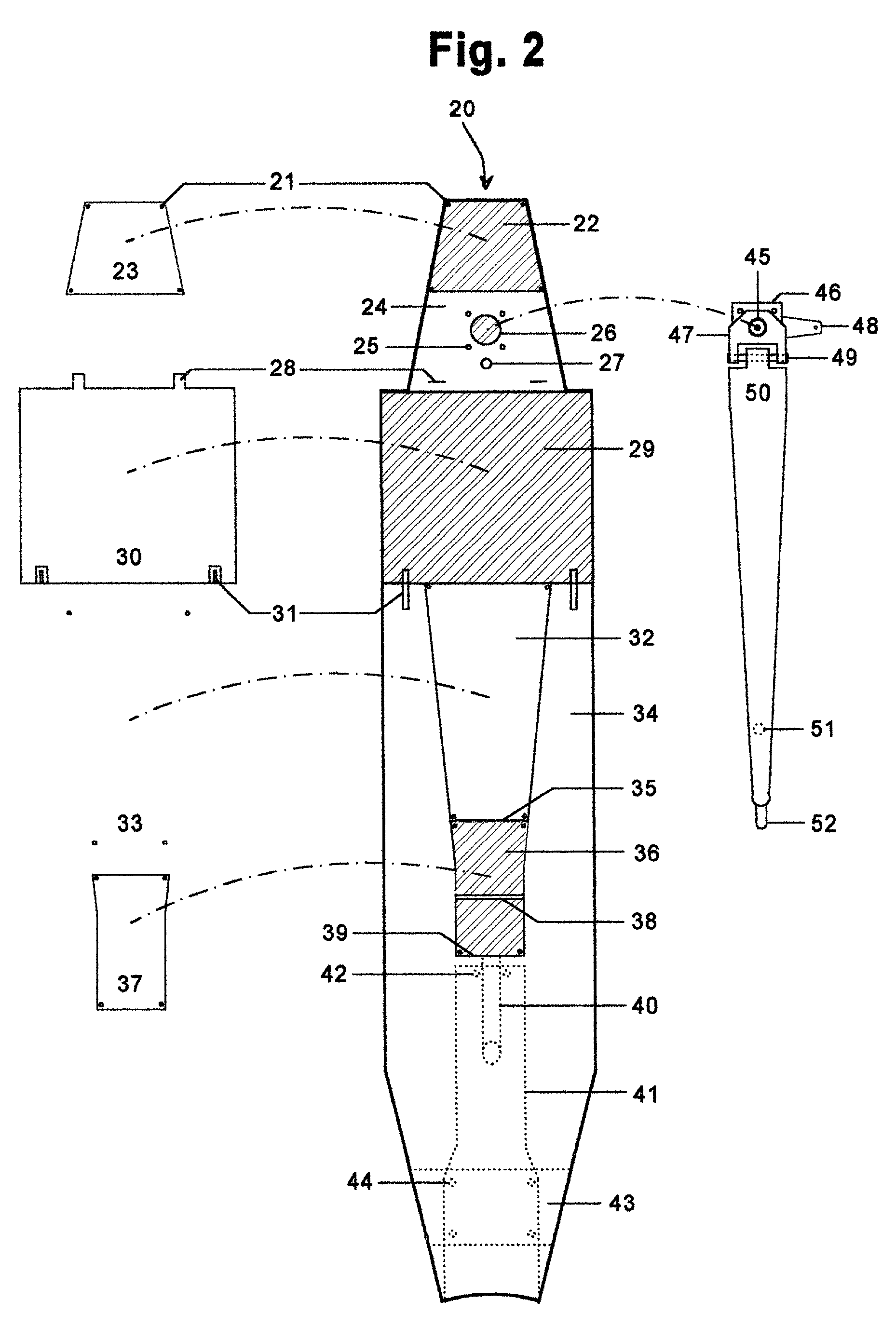Drive and control system for watercraft
a control system and watercraft technology, applied in waterborne vessels, special-purpose vessels, vehicles, etc., can solve the problems of watercraft with an unloaded center of gravity, montgomery's design still fails to realize many of the handling and overall performance advantages inherent in the design, and the idea of a control system for the same has not yet been provided
- Summary
- Abstract
- Description
- Claims
- Application Information
AI Technical Summary
Benefits of technology
Problems solved by technology
Method used
Image
Examples
Embodiment Construction
[0047] A preferred embodiment of the drive and control system for watercraft of the present invention is illustrated in FIG. 1 (side view) as it may be used by a rear positioned standing rider. Refering to FIG. 1, the drive and control system is integrated into a surfboard-based hull 55 and the operator is holding handle 52 provided on steering arm 50. The placement of system controls, typically at craft operator handle(s), as well as basic craft operation are well known to prior art craft of the field and will therefore not be discussed in detail here.
[0048] Referring now to FIGS. 2-4 a framework of the preferred embodiment of the present invention 20 is shown in top, bottom, and side views. This framework provides a means of structual support for the drive and control system components and can be built into the hull of a craft specifically designed for this drive and control system. This framework can also be adapted to many existing watercraft hulls with minimal framework and wat...
PUM
 Login to View More
Login to View More Abstract
Description
Claims
Application Information
 Login to View More
Login to View More - R&D
- Intellectual Property
- Life Sciences
- Materials
- Tech Scout
- Unparalleled Data Quality
- Higher Quality Content
- 60% Fewer Hallucinations
Browse by: Latest US Patents, China's latest patents, Technical Efficacy Thesaurus, Application Domain, Technology Topic, Popular Technical Reports.
© 2025 PatSnap. All rights reserved.Legal|Privacy policy|Modern Slavery Act Transparency Statement|Sitemap|About US| Contact US: help@patsnap.com



